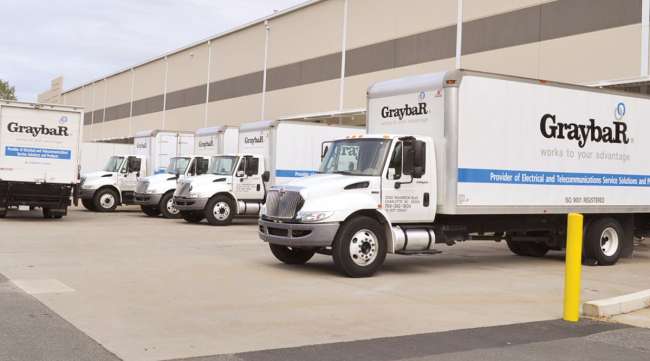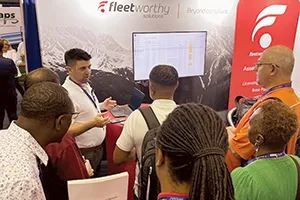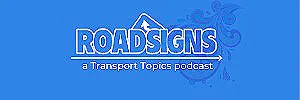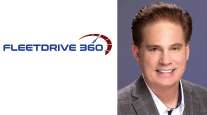Fleets Turn to Tech to Manage Complexity of Regulatory Compliance

[Stay on top of transportation news: Get TTNews in your inbox.]
As motor carriers expand their fleets, they can experience growing pains when it comes to regulatory compliance.
With more drivers and more equipment to manage, some of these fleet operators have been implementing technology to help navigate the complexity of the industry’s numerous regulations and better manage safety audits.
One example is Graybar, a wholesaler of electrical communications products that operates a private fleet of 880 trucks. The St. Louis-based company converted from paper files to compliance and audit management technology in 2021.
“We knew the state of our [driver qualification] files. We have 200-plus locations and everything was being done on a district-by-district, branch-by-branch basis,” said Amy Huelsmann, Graybar’s corporate fleet and safety manager. “We wanted something that would centralize all of our documents, all of the things that we need to be compliant into one central source that everyone could use [so] we could look everything up very easily and quickly.”
Technology that supports compliance and audit management needs to be able to “ingest and digest” data from an array of sources, said Michael Precia, CEO of Fleetworthy Solutions, which provided its compliance system to Graybar.
Those data sources include fleets’ telematics systems and transportation management software, as well as government sources such as Compliance, Safety, Accountability scores from the Federal Motor Carrier Safety Administration.
See the 2023 Top 100 rankings
►Growth Despite Softer Freight Market
►The Truckers of Tomorrow
►Taking Aim at the Parking Shortage
►Managing Regulatory Compliance
►Interactive Map
►Sector Rankings Show Growth, Acquisitions
Sector Rankings
LTL | TL/Dedicated
Intermodal/Drayage
Motor Vehicle/Driveaway
Tank/Bulk | Air/Expedited
Refrigerated | Flatbed/HS
Package/Courier | Mail
Household Goods/Commercial
Fleets that have been in business for 30 years or more pre-date the emergence of today’s technologies, so many had to build proprietary systems to serve their purposes, and they are still using them, Precia said.
“That works,” he said, “but as the workforce turns over, they risk losing that native knowledge of homegrown solutions,” which he said can expose the carriers to more risk.
Nic Sallis, chief operating officer at FleetDrive 360, another compliance technology provider, said that most operators “either have no solution or it’s an ad hoc system that they’ve put into place,” ranging from individual owner-operators that might have documents shoved into a glove box to a fleet using a complex spreadsheet system to manage thousands of driver documents.
Carriers often have separate systems and methods to manage individual pieces of the compliance and audit process, Sallis said, such as driver onboarding, drug and alcohol programs, document maintenance, accident registry and vehicle maintenance.
Whether a carrier uses a vendor-supplied system or a proprietary system, it should provide a clear, step-by-step sequence to move drivers through the onboarding process to ensure that “all the boxes” have been checked, Sallis said.
He estimated that there are 60 to 70 different questions to answer and tasks to complete for the onboarding of each new driver, including documents the fleets must collect and verify, background checks that need to be run, plus drug testing and clearinghouse queries.
“All these things have to happen before they can legally hit the road,” Sallis said.
Compliance management technology also can provide proactive guidance on the ins and outs of licensing and permitting equipment based on state and usage, Fleetworthy’s Precia said.
As for a vehicle’s International Fuel Tax Agreement status, a management system can highlight to the carrier that a vehicle must leave the state before a certain date, “because once you miss that opportunity, you’re noncompliant,” Precia said. “Those are hard things to remember across a large fleet. It’s hard to remember across a small fleet.”

Vendors such as Fleetworthy offer software and services designed to streamline regulatory compliance for trucking fleets. (Fleetworthy Solutions)
Fleetworthy Solutions analyzes the data it collects to provide business intelligence to benefit its carrier customers.
“We certainly see trends,” Precia said. “And we certainly know which carriers are really successful from a compliance perspective and which ones are struggling.”
Staying abreast of regulatory changes is more than a matter of implementing audit management technology alone, Precia added.
The vendor retains subject matter experts who understand “what the government is doing,” he said. He recalled when FMCSA implemented its electronic logging device mandate, it instructed ELD vendors to “self-certify” the devices they were marketing.
“Some of them knew what they were doing,” Precia said. “Some didn’t.”
In such cases, a compliance system with up-to-date information on regulations, combined with on-staff experts who understood hours-of-service rules, becomes a “safety net,” Precia said.
Graybar’s compliance with U.S. Department of Transportation regulations was less than 30% before implementing compliance management technology, said Huelsmann and Keith Bailey, the company’s director of corporate safety and fleet management. Today, DOT compliance is at 95%, they said.
Bailey said Graybar ran a pilot in its district in St. Louis that lasted several months in 2021, then implemented the system throughout the company’s locations.
Rather than having to go to the DOT website, “which can be somewhat cumbersome, we’re able to just pull up our dashboards and look at our overall compliance as a company,” Bailey said.
Graybar can review roadside inspections by both the branch and individual drivers. Bailey said the company can see “what drivers we have out there that might need a little bit of coaching.”

Guy Broderick of Kriska shares how he successfully combined data reports and a simple understanding of human nature to become one of the best driver coaches in North America. Tune in above or by going to RoadSigns.ttnews.com.
Implementing compliance technology can be time consuming, vendors and the Graybar managers said.
“Originally we were going to scan all the documents, but we found that was going to be a huge undertaking,” Huelsmann said.
Drivers’ commercial driver licenses and medical cards were scanned, but “we actually started their DOT files over,” she recalled.
Each driver completed a digital form so their data went straight into the cloud-based system. Fleetworthy then notified Graybar’s managers of omissions that they needed to address.
Huelsmann noted that regulatory compliance is a continuous process.
“Every month things are expiring, things have to be renewed,” she said. “Now we have a complete handle on that.”
Managers can go into the system at any time and see the compliance status of any driver.
“If their medical cards are going to be expiring in two months, we know that, so we can get a head start on it,” Huelsmann said.
As new regulations take effect or existing ones are changed, audit management technology and carriers must adapt.
Looking ahead, Sallis of FleetDrive 360 said he is keeping an eye on three issues in particular: marijuana, advanced driver-assist systems and battery-electric commercial vehicles.
“If you have a good organizational system for your documents, and they’re digitized, then when it’s time for an audit it’s easy to find the necessary files,” Sallis said. “Document management is the foundation of all of it.”
Want more news? Listen to today's daily briefing below or go here for more info:





